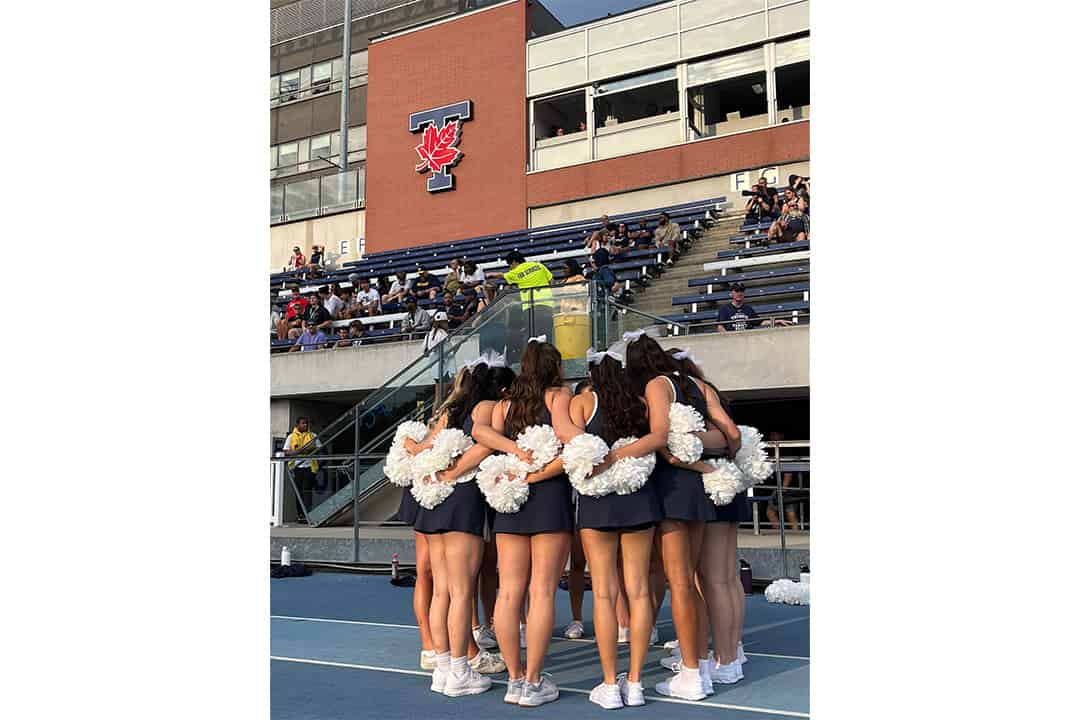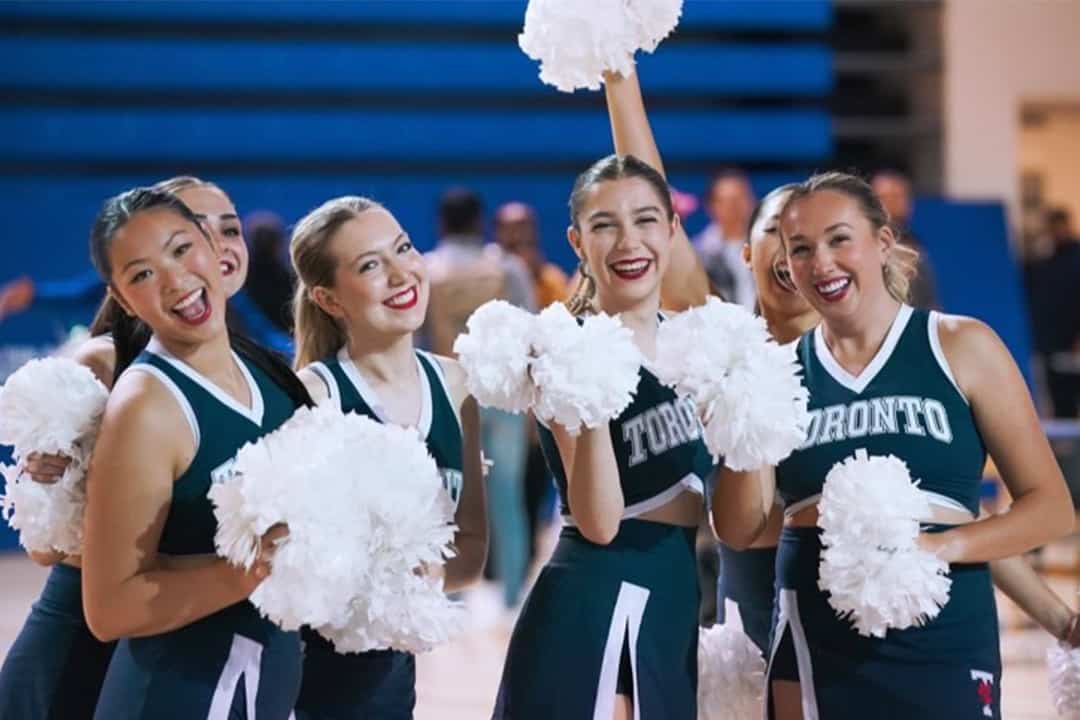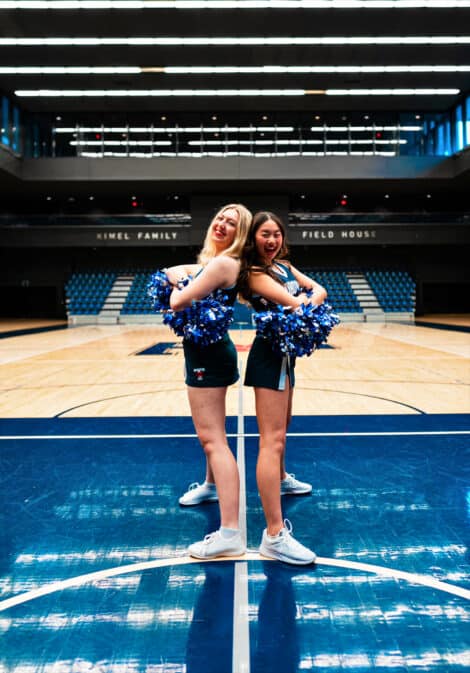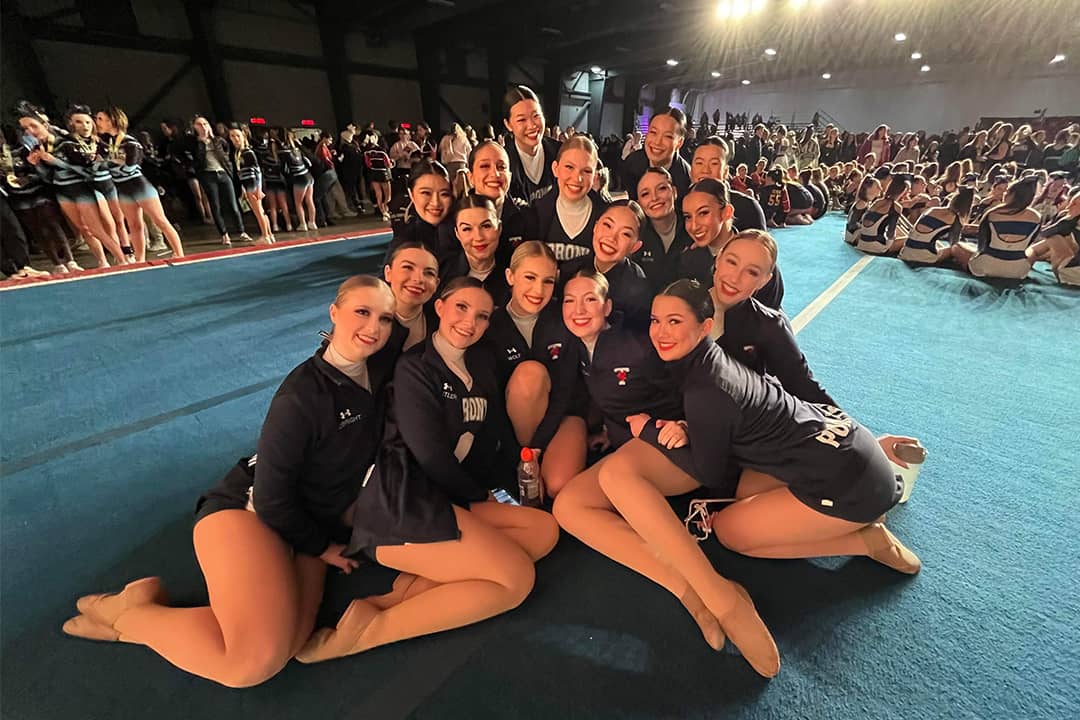If you’ve been to a football or basketball game at U of T, you’ve likely seen the pom team perform. They’re a fun bunch to watch, with their impressively coordinated routines and incredible enthusiasm. The Varsity sat down with co-captains Mackenzie Wong and Maya Halstead to talk about what exactly the pom team does, how they choreograph routines, the misconceptions people have about dance, and the auditions they held recently.
Pom vs. cheer
Students may confuse the pom team with the cheer team at U of T. Admittedly, I didn’t realize they were two separate teams, so my first question to the co-captains was about whether they could explain the difference between the two.
Halstead, a second-year kinesiology student, explained that both teams engage the audience and root for the players during U of T games. However, the cheer team does stunts that use techniques similar to those found in gymnastics, while the pom team performs dances with their pom-poms, focusing more on rhythm and expressing emotion.
So, what goes into a routine?
“We usually like to pick a song first,” said Wong, a third-year Rotman Commerce student, when I asked the co-captains about what goes into choreographing a dance routine. Once the song is chosen, they chop the song up, block out all distractions, and ask themselves: “What can [we] do to bring these people from one place to another?” The movement of dancers from one place to another must be practical and visually appealing, so the team often does a bit of “playing around in front of a mirror” to see what works.
Halstead explained that the movements must also be in line with the traditional pom style, which is “almost like a fusion between… jazz and hip hop,” with the addition of slightly more “robotic” movements. “You want to have everyone’s arm in the exact same position with their pom looking the exact same way to… make it look as clean as possible,” she continued.
“Most of pom is specifically the arms,” Wong added. “[Unlike] hip hop and jazz [where] you can use more of your torso or your legs. Not that you [can’t use them] — we do kicks and turns — but everything that’s visually appealing about pom mostly is going to be… the positions of [the] arms.”

An effortless image
Many people do not view pom, or dance in general, as a legitimate sport even though Wong explains that being a dancer “[requires you] to have strength; [requires] you have to have flexibility and control over your entire body.” According to Wong, these are three essential abilities in most sports.
Halstead points out that one of the reasons people do not view pom as a legitimate sport is because it is an artistic one, and the dancers on the team “strive not to make it look hard.” “One of the goals is we don’t want to look like we’re tired and… struggling through a routine,” she said. “We want to perform; we want to look like we feel energized and… project the energy into the audience and make the audience feel energized.”
What people do not see, Halstead continued, is the amount of practice they put into their work, as well as “[the] technique and conditioning and endurance training that [they] have to do to make everyone look as clean as they are.”
The auditions
The co-captains recently held auditions for this year’s pom team and were shocked to see that registration for the auditions was booked out, with the number of interested students pushing past a hundred. “They blew us away,” Wong said, her eyes lighting up.
The sheer talent in Goldring Centre that day was exciting to witness, but it also meant that deciding who to pick and who to turn down would be difficult, so I asked the co-captains about what might set a potential candidate apart.
Two main qualities set a potential candidate apart and can even make up for techniques that are not necessarily the best. The first is how quickly dancers can memorize choreography; the second is performance, or how dancers project energy. According to Halstead, that’s “the hardest thing to teach.”
“If your performance is amazing, it’ll put you above other people because our eyes [are] just drawn to you, because of… the energy that you’re giving out,” added Wong.
To conclude, Halstead said she’s most looking forward to “[taking] all the new rookies and just… changing the gears in their head and [turning them] into pom-ers and then… watch [them] grow as a team.”
“One of our big goals is just to make sure the team is a welcoming place for everyone. We’re really trying to avoid cliques from happening this year,” Wong said. “We’re doing that through a lot of team bonding and getting to know people… really just making it a safe space.”





No comments to display.